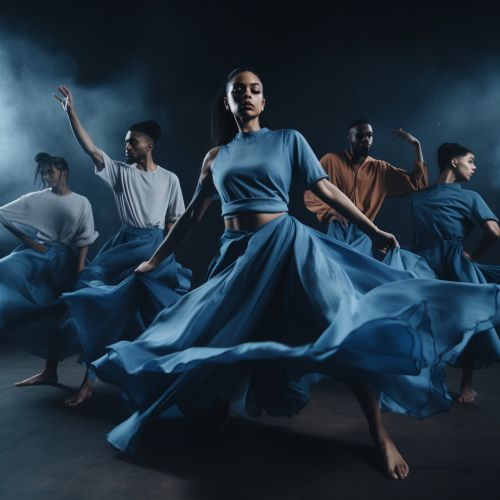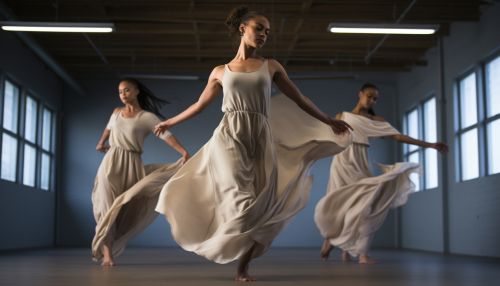Modern dance
Origins of Modern Dance
Modern dance, a dance style that began to develop in the late 19th century, is a broad genre that is often defined as being the opposite of classical ballet. The roots of modern dance can be traced back to the Romantic era, where there was a shift in the status quo towards expressing emotion and individuality. This was a time when the arts began to break away from the strict rules and conventions that had previously governed them.


The pioneers of modern dance, including Isadora Duncan, Ruth St. Denis, and Martha Graham, rejected the rigid techniques of ballet and sought to express the emotional and physical freedom of the human spirit. They believed that dance should be a form of personal expression, and they incorporated movements that were natural and intuitive.
Techniques and Styles
Modern dance techniques vary greatly due to the creative freedom embraced by its practitioners. However, there are some common elements that are often present. These include the use of gravity to pull dancers towards the floor, off-balance movements, improvisation, and the use of emotion to drive the movement.
One of the key characteristics of modern dance is the use of the contraction and release technique, developed by Martha Graham. This involves the rhythmic contraction of the muscles, followed by their release, creating a pulsating movement that can express a wide range of emotions.
Other notable techniques include the fall and recovery method, pioneered by Doris Humphrey, which involves the dancer falling off balance, only to recover and regain stability. This technique is often used to symbolize the human struggle and resilience.
Influences and Evolution
Modern dance has been influenced by many different cultures and dance styles. For example, Ruth St. Denis was inspired by the dances of Asia and Egypt, while Isadora Duncan drew inspiration from the classical Greek arts.
In the mid-20th century, a new generation of modern dancers began to emerge, bringing with them new ideas and perspectives. Choreographers such as Merce Cunningham and Paul Taylor began to experiment with the structure of dance, challenging the traditional narrative and linear progression.
Modern dance continues to evolve today, with contemporary choreographers incorporating elements from other dance styles, such as hip hop, jazz, and even circus arts. This constant evolution and fusion of styles is what keeps modern dance fresh and relevant.
Impact and Legacy
Modern dance has had a significant impact on the world of dance and beyond. It has challenged the traditional norms of what dance should be, and has opened up new possibilities for expression and creativity. It has also influenced other dance forms, such as contemporary dance and postmodern dance.
The legacy of modern dance can be seen in the work of many contemporary choreographers, who continue to push the boundaries of what is possible in dance. It has also had a profound impact on dance education, with many dance schools now offering modern dance as part of their curriculum.
